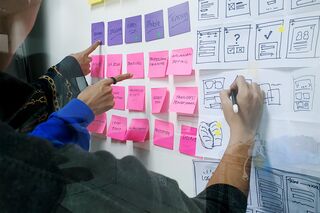Creativity
How to Codebreak Your Way to Success in Any Field
You can increase the odds of reaching a goal by reverse engineering.
Posted July 12, 2021 Reviewed by Jessica Schrader
Key points
- Add reverse engineering to your talent and practice to achieve great things.
- Creativity does not always mean coming up with something entirely new.
- Keeping track of your chosen behaviors is the best way to increase their occurrence.

Have you sometimes read a how-to book about achieving success and ended by thinking, "Too many words saying the same thing—that should have been an article"? That has happened to me. Happily, this was not the case with the book I finished reading today.
Titled Decoding Greatness: How the Best in the World Reverse Engineer Success, it was authored by Ron Friedman, a social psychologist and corporate consultant. Even when writing about writers, whom I've researched widely myself, Friedman's fresh approach is surprisingly inspiring. I would like to share my interview with him here.
Q&A With Ron Friedman
Q. Reverse engineering is a cool term that I'd never heard used in quite the ways you write about. For actors, athletes, writers, and other creatives, to every kind of businessperson and more, you claim that reverse engineering is a very useful strategy. Who will not benefit from your book?
A: If you’re looking to learn faster or become more creative, this book is for you. It’s about an approach that artists, inventors, and entrepreneurs have been using for generations to understand how exceptional works were created, and, more importantly, how they can be recreated.
At the moment, not every job requires learning or creativity. But there’s good reason to believe those jobs are in danger of being eliminated in the coming years. The only way to stay successful (or even relevant) is to continue to learn.
What's Special About Reverse Engineering?
Q: You make it super clear that talent and practice, while major components in the journey to "greatness," aren't the whole picture. Then you explain the importance of reverse engineering. Would you like to give my readers the rudiments of that process?
A: I’m a social psychologist who studies top performance, and in my first book I wrote about the science of creating a great workplace. But there was something missing from that book and that is that even within the best workplaces there’s a range of performance levels. Some people are top performers whereas others are not. In Decoding Greatness, I looked at what separates top performers from everyone else, and what I found is they are not simply relying on talent or practice, they are using a technique that few people have heard of called reverse engineering. Reverse engineering simply means finding the best in the field and then working backward to figure out how they did it.
Q: Entrepreneurial success often seems such a crapshoot. You talk about pattern recognition as a useful ability, and that it's necessary to consider the viability of an enterprise rather than focusing only on novelty. Have people been misled to think that brainstorming should not keep going through the phase of "is it possible, viable, doable, by us, now?"
A: There’s certainly value to brainstorming new ideas. But successful entrepreneurs go about it differently. They work backward to identify a business model hidden within a successful venture. For example, Starbucks and Chipotle both capitalize on the same underlying business model: find something that’s working somewhere else and import it into your hometown. In the case of Starbucks, Howard Schultz saw the successful espresso bars of Italy and brought them into Seattle. In the case of Chipotle, Steve Ells saw the successful Mexican restaurants of San Francisco and brought them to Denver. In looking for hidden patterns, the best entrepreneurs are able to generate new business ideas quickly.
Is Creativity Just One Thing?
Q: What's the wrong way to think about creativity?
A: The wrong way to think about creativity is that it requires complete originality. Often the best creative ideas are a blend of existing concepts that have been proven to succeed and adding something. For example, Lin-Manuel Miranda took the standard Broadway formula and added rap and salsa as in In the Heights. In Hamilton, he took the formula one step further by layering in American history. He didn’t create something entirely new that the world has never seen before. He combined existing elements in a new way.
Q: Your idea to collect your own private museum of good examples of what you want to succeed at makes sense. Writers read and absorb so many lessons without specifically trying. However, by making your learning a bit more conscious, you can gain so much more. Care to expand?
A: That’s exactly right. By starting a collection of outstanding examples—from well-crafted emails to persuasive TED Talks—you can begin to unpack them for clues about what makes them succeed. So that’s the first step, collecting. The next step is deconstructing those examples. You can start by comparing the examples in your collection against average examples that didn’t make your collection. It’s a bit like playing a version of a game we all played as children called Spot the Difference. By comparing the ordinary against the extraordinary, you can’t help but identify the ingredients that make successful works unique.
Q: Some people like outlining, while others do not. Can you say something about reverse outlining and how detailed it ought to be?
A: If you’ve taken even a middle-school-level writing class, you’ll probably remember having to write an outline. It’s the process of planning a paper in advance by listing the major points you intend to address in the various sections of your piece. Reverse outlining is traditional outlining’s sneakier, more provocative cousin. It doesn’t involve listing the important arguments you intend to include in the future. Rather, it entails working backward and outlining the major points contained within a completed piece.
You can do this for anything from a blog post to a website to a bestselling book. I’d actually warn against being too detailed. The best insights come from viewing the totality of work by glimpsing it at a high level, and you can get that without a great deal of detail.
Q: What a neat idea you wrote about to use reverse engineering to design a successful TED talk! (That's what I meant in the Introduction to this post about your plethora of fresh insights.)
A: Thanks! That’s just one way to apply reverse engineering to learn quickly. I wanted to give readers a practical example. The sky is the limit.
Creativity Happens When ...
Q: You quoted author Matt Ridley about creativity in one of your subheads. It's my favorite subhead (and creativity quote) ever: "Creativity is what happens when ideas have sex." Comment?
A: Ridley’s point is that you don’t need to be a complete original to be creative. You just need to come across the right combination of ideas. It’s not just insights—it’s also liberating. Don’t try to be original—aim to find new combinations.
Q: Part II of Decoding Greatness is a treasure chest of clear-eyed solutions to the "vision-ability gap." Are there one or two favorite tips you'd like to share here and now?
A: The single best tip I can offer you for improving at anything is to create a personal scoreboard. We know from the research that simply keeping track of your performance tends to lead to improvement. If you want to drink more water, keep score of your daily water intake. If you want to lose weight, keep score of your daily calorie consumption. If you want to increase your focus at work, keep score of your uninterrupted minutes. That’s an incredibly powerful tool and one that is criminally underutilized.
Copyright (c) 2021 by Susan K. Perry, Ph.D.




